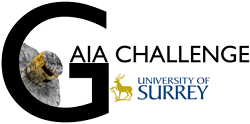This is an old revision of the document!
Challenge 4: M4
Method comparison: N-body model of M4
The mock data is a snapshots of large $N$-body simulation of the globular cluster M4 are available here. Full lists of data for all particles (mass, position, velocity, stellar type, stellar radius, V magnitude, B-V colour) are given at almost 400 instants in the lifetime of the model. The simulation is described in the http://arxiv.org/abs/1409.5597, which should be cited when making use of this data.
We selected the snapshot at $t = 12023.9$ Myr and assume that radial/LOS velocities are available for all stars brighter than $V=15$ (N=1143). A distance modulus of 11.35 mag was adopted (i.e. $D=1862.1$ pc). The cluster properties are:
- M = 69144.5 M_sun
- L_V = 35547.1 L_V_sun
- M/L_V=1.95
- r_h = 3.14 pc
We do the comparison in 3 steps:
- Surface brightness profile + RVs
- Surface brightness profile + RVs + PMs
- Surface brightness profile + RVs + PMs + Gaia
The data for the 3 fitting steps :
- Step 1:
- Surface brightness: m4_sb.dat.gz
- Discrete LOS velocities: m4_rv.dat.gz
- LOS velocity dispersion profile: m4_rv_disp.dat.gz
- Step 2:
- Discrete proper motions: m4_pm_mock.dat.gz
- Proper motion dispersion profiles: m4_pm_disp_mock.dat.gz
For methods that allow it, you can also use constraints from a mock observed mass function at a projected radius of 300 arcseconds from the centre: m4_mass_function.tab.gz
A number density profile for stars brighter than the main-sequence turnoff (V < 17 mag; corresponding to a turnoff mass of 0.82 solar masses) is also available (m4_number_density.dat.gz). This can be used as an alternative/complement to the surface brightness profile.
The mass profile in projection and the $M/L_V$ ratio in projection can be found here:
